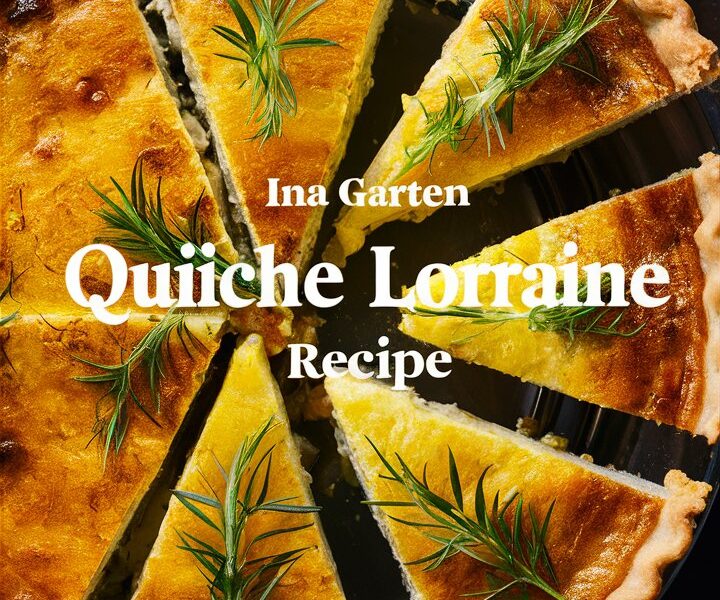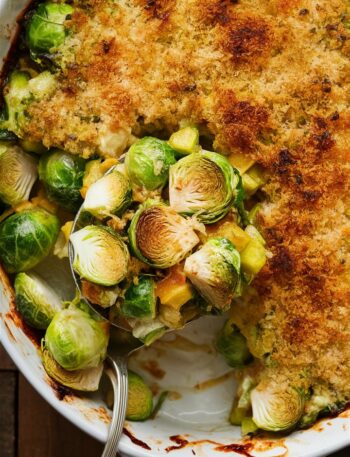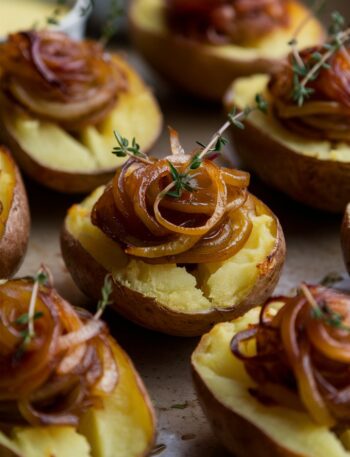There are recipes that feel timeless, and then there are recipes that truly are timeless. Classic Quiche Lorraine belongs in the second category. With origins in the Lorraine region of northeastern France, this savory tart embodies everything people love about French cuisine: elegance, balance, and comfort.
Imagine cutting into a golden pastry shell that crumbles delicately at the touch of your fork. Beneath the crisp crust lies a custard that is rich yet light, studded with smoky bacon, gently caramelized onions, and just the right amount of cheese. Every bite delivers warmth and sophistication, whether it’s served at a family brunch, a holiday breakfast, or a light yet indulgent dinner.
This guide is more than just a recipe. It’s an invitation to explore the heritage, flavors, and versatility of Quiche Lorraine. By the end, you’ll not only know how to make it step by step but also how to adapt it to your tastes, serve it with style, and enjoy it at its best.
A Short History of Quiche Lorraine
The story of Quiche Lorraine begins in the Lorraine region of France, a borderland shaped by both French and German culinary traditions. The word “quiche” is derived from the German word kuchen, meaning cake. Early versions were rustic and hearty, made with bread dough as the base instead of pastry.
Over time, French chefs refined the dish, replacing bread with a flaky, buttery crust and perfecting the balance of cream, eggs, and smoky pork. By the 20th century, Quiche Lorraine had spread far beyond France, earning a reputation as a sophisticated yet approachable dish for home cooks and professional chefs alike.
Today, Quiche Lorraine is found in bakeries, cafés, and kitchens around the world. Despite its evolution, its essence remains the same: a simple combination of humble ingredients transformed into something extraordinary.
Why Classic Quiche Lorraine Is Worth Making
- It’s elegant but not complicated: You don’t need fancy skills to prepare it, yet it looks impressive every time.
- Versatile for any occasion: Works as well for a brunch buffet as it does for a cozy dinner.
- Make-ahead friendly: Can be prepared in advance, freeing you up on busy mornings.
- Customizable to taste: The base recipe is a canvas—perfect for experimenting with cheeses, herbs, or vegetables.
- Deeply comforting: A true representation of French comfort food that always satisfies.
Ingredients – What You’ll Need
Before you dive in, let’s look at the key ingredients that make Quiche Lorraine unforgettable.
For the Crust
- All-purpose flour (1 ¼ cups / 160 g): Forms the structure of the pastry.
- Salt (½ teaspoon): Enhances flavor.
- Unsalted butter (½ cup / 115 g, chilled and cubed): Creates that essential flakiness.
- Ice water (3–4 tablespoons): Brings the dough together.
(Shortcut: you may use one pre-made 9-inch pie crust, but homemade gives the best results.)
For the Filling
- Bacon (6 slices / 150 g lardons): Smoky, savory, and essential to the flavor base.
- Onion (1 medium, finely diced): Adds sweetness and depth.
- Gruyère cheese (1 ½ cups / 180 g, shredded): The traditional choice for a rich, nutty flavor.
- Eggs (4 large): Provide structure and set the custard.
- Half-and-half (1 ½ cups / 360 ml): A blend of milk and cream for a luscious custard.
- Kosher salt (½ teaspoon): Balances flavors.
- Black pepper (¼ teaspoon): Adds warmth.
- Paprika (¼ teaspoon): Subtle smokiness.
- Nutmeg (pinch): A classic French touch for depth.
- Parsley or chives (for garnish): A fresh finishing note.
Step-by-Step Instructions
Step 1: Prepare the Crust
- Roll chilled dough into a 12-inch circle on a floured surface.
- Fit into a 9-inch tart pan or pie dish, pressing gently into the corners.
- Trim excess and prick the bottom with a fork.
- Freeze for 30 minutes while preheating oven to 350°F (175°C).
Step 2: Blind Bake the Crust
- Line crust with parchment paper and fill with pie weights or dried beans.
- Bake 35–40 minutes until edges are golden.
- Remove weights, brush crust interior with whisked egg white, and return to oven for 5 minutes to seal.
Step 3: Cook Bacon and Onion
- Cook bacon in a skillet until crisp, then transfer to paper towels.
- In the same skillet, sauté diced onion in bacon fat until soft and golden.
Step 4: Make the Custard Mixture
- Whisk eggs in a mixing bowl until smooth.
- Add half-and-half, salt, pepper, paprika, and nutmeg; whisk to incorporate air for a light texture.
- Fold in cheese, bacon, and onion.
Step 5: Assemble and Bake
- Pour filling into pre-baked crust, smoothing the top.
- Bake 45–55 minutes until center is just set but slightly wobbly.
- Let rest 10–15 minutes before slicing.
- Garnish with parsley or chives.
Variations and Substitutions
- Cheese: Replace Gruyère with Swiss, white cheddar, fontina, or smoked gouda.
- Vegetables: Add sautéed spinach, mushrooms, or roasted red peppers.
- Crustless: For a lighter option, grease the dish and bake without pastry.
- Meat options: Try pancetta, ham, or turkey bacon.
- Dairy alternatives: Use whole milk for lighter custard or all cream for richer texture.
- Herbs: Experiment with thyme, tarragon, or dill for new flavor notes.
Serving Suggestions
- Brunch spread: Pair with fresh fruit, croissants, and mimosas.
- Light dinner: Serve with a crisp green salad and roasted asparagus.
- Wine pairing: A chilled Chardonnay or sparkling wine balances the richness.
- Casual gathering: Slice into small squares for finger food at parties.
Storage and Leftovers
- Refrigerator: Store in airtight container up to 4 days.
- Reheat: Warm slices in a 300°F oven until heated through.
- Freezer: Wrap slices tightly in plastic and foil; freeze up to 2 months.
- Thawing: Defrost in fridge overnight before reheating.
Pro Tips for Success
- Blind bake crust to avoid sogginess.
- Always cook vegetables before adding to filling to remove moisture.
- Let quiche rest before slicing for cleaner cuts.
- Use cold butter when making crust to ensure flakiness.
- Add cheese evenly so every slice gets balanced flavor.
Frequently Asked Questions (FAQs)
1. Can I use puff pastry instead of pie crust?
Yes, puff pastry creates a lighter, flakier shell. Just blind bake it the same way.
2. How do I know when quiche is done?
The center should jiggle slightly but not be liquid. A knife inserted should come out mostly clean.
3. Can I prepare Quiche Lorraine the night before?
Yes, bake it ahead and reheat, or assemble filling and crust separately, then bake fresh.
4. How long can quiche sit at room temperature?
Up to 2 hours. After that, refrigerate for safety.
5. What wine pairs well with Quiche Lorraine?
Chardonnay, Pinot Gris, or Champagne pair beautifully with its richness.
Nutrition Information (per slice, 1 of 8)
- Calories: ~360
- Protein: 13 g
- Carbohydrates: 18 g
- Fat: 27 g
- Fiber: 1 g
- Sodium: 550 mg
(Values approximate and vary by ingredients used.)
Final Thoughts
Classic Quiche Lorraine is more than just a recipe; it’s a culinary tradition that has stood the test of time. With its flaky crust, creamy custard, and smoky richness, it offers comfort and elegance in equal measure. Whether you prepare it for a festive brunch, a family dinner, or simply to treat yourself, this dish never disappoints.
Cooking it at home also allows you to appreciate its versatility—add your favorite cheese, experiment with herbs, or serve it with different sides. No matter how you adapt it, Quiche Lorraine remains a dish that brings people together and leaves them satisfied.
So, preheat your oven, roll out your dough, and experience the joy of baking a French classic in your own kitchen.





